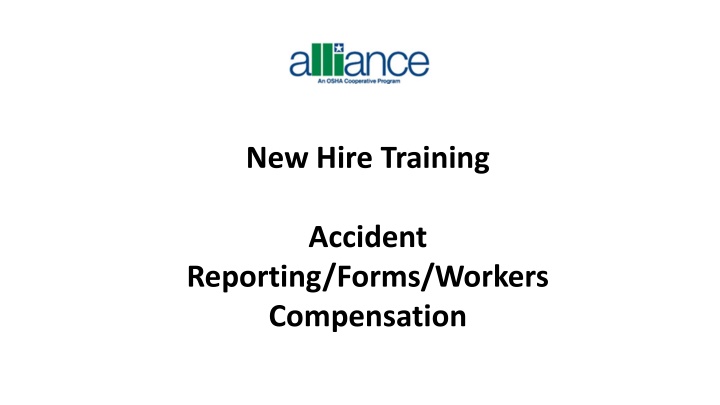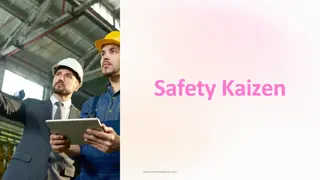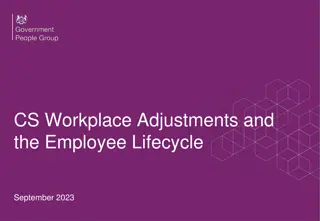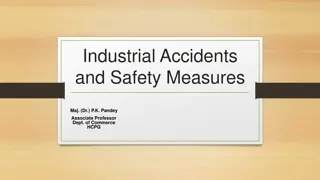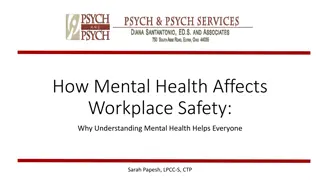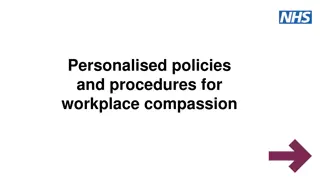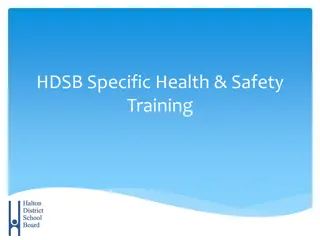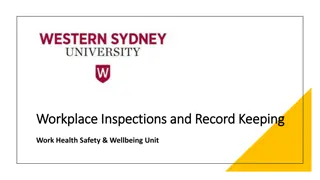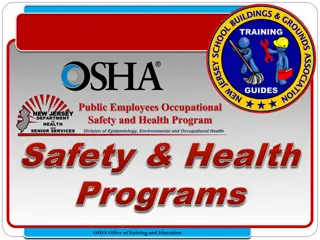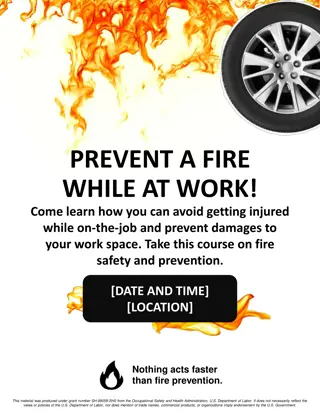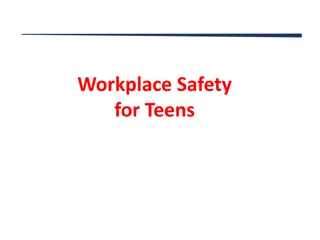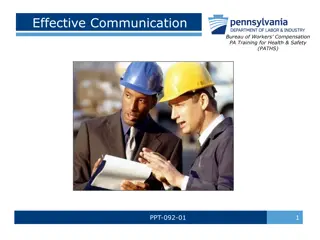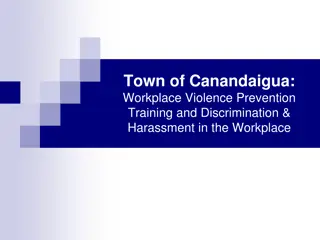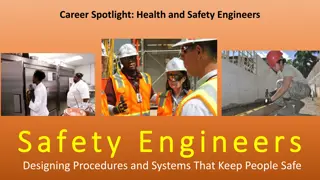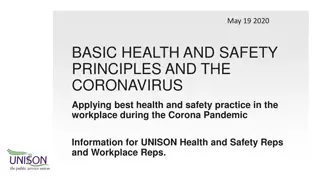Workplace Safety and Policies Overview
Workplace safety is paramount at our organization, as reflected in our comprehensive safety policies and goals. From accident reporting to substance abuse prevention, our commitment is to ensure a safe and drug-free workplace for all employees. Explore our policies on cell phone usage, worksite hazards, and the OSHA Fatal Four to understand how we prioritize employee safety. Empowerment through the Stop Work Authority initiative ensures that every individual plays a role in maintaining a secure work environment.
Download Presentation

Please find below an Image/Link to download the presentation.
The content on the website is provided AS IS for your information and personal use only. It may not be sold, licensed, or shared on other websites without obtaining consent from the author.If you encounter any issues during the download, it is possible that the publisher has removed the file from their server.
You are allowed to download the files provided on this website for personal or commercial use, subject to the condition that they are used lawfully. All files are the property of their respective owners.
The content on the website is provided AS IS for your information and personal use only. It may not be sold, licensed, or shared on other websites without obtaining consent from the author.
E N D
Presentation Transcript
New Hire Training Accident Reporting/Forms/Workers Compensation
Safety Policy and Goals Safety Policy and Goals All incidents are preventable. Everyone returnshome without injury each day. Everyone is empowered to preventincidents. Our goal is to create the conditions to ensure the safety of our employees. 1
Substance Abuse Policy We are committed to maintaining a safe and drug-free workplace For more info, including our EmployeeAssistance Program (EAP), contact your HR rep More info can be found at http://www.drugfreeconstruction.org/ 3
Cell Phone Policy Cell phone use is prohibited while: Conducting job responsibilities Operating company vehicles or machinery Standing within 10 feet of moving vehicles 4
WorksiteHazards Report all work related injuries to your supervisor immediately and email HR Injury types include, but are not limited to: Injury types include, but are not limited to: Minor cuts Scrapes Scratches Burns Other treatments that require minimal training or technology to administer More info can be found at http://www.drugfreeconstruction.org/ 5
WorksiteHazards OSHA s Fatal Four: Falls (car tops, entrances, leading edges) Electrocution Caught in/between objects (elevator pits, hoistways, pinch points) Getting struck by an object (vehicles, falling objects) Do not enter restricted areas without permission Ensure work has stopped before entering an area. Do not work under suspended loads We will cover more on these topics in your orientation 6
WorksiteHazards More Effective (best) Least Effective (worst) ***** **** *** ** * Elimination of Hazard Substitution Engineerin g Labor Practices/ Administrative Controls (Training & Procedures) Personal Protective Equipment (PPE) 7
Stop Work Authority Stop WorkAuthority empowers employees and contract workers with the ability and obligation to stop work if conditions are deemed at-risk If you see something that doesn t look right, say something to authorities or your supervisor 8
Incident Ratio Model-Heinrichs Theory Serious Injury or Death 1 Most Incident Investigations Conducted 29 Biggest percentage of injury-causing potential! Minor Injury Few Investigations Conducted 300 Near-Miss 3,000 UnsafeActs, Behaviors or Conditions
The Aim of the Investigation Is Not To: Exonerate individuals or management Satisfy insurance requirements Defend a position for legal argument Assign blame Remember, fact finding not fault finding 9
WEED OUT THE CAUSES OF INJURIES AND ILLNESSES Direct causes of injury/illness Surface Causes of the Accident Behaviors Conditions Lack of time Fail to enforce Inadequate training No discipline procedures No orientation process Outdated procedures Root Causes of the Accident Inadequate training plan No accountability policy No inspection policy Don t delay in reporting near misses. Even a minor incident can be the precursor to a deadly incident if the underlying causes aren t identified and addressed. If you eliminate the root cause of an accident, you will eliminate those accidents in the future! 9
Through the Alliance between OSHAs 10 Regional Offices and the Elevator Contractors of America (ECA), Elevator Industry Work Preservation Fund (EIWPF), International Union of Elevator Constructors (IUEC), National Association of Elevator Contractors (NAEC), National Elevator Industry Educational Program (NEIEP), and National Elevator Industry Inc. (NEII), collectively known as The Elevator Industry Safety Partners, developed this Industry Specific Training for informational purposes only. It does not necessarily reflect the official views of OSHA or the U.S. Department of Labor. March 2025 Under the Occupational Safety and Health Act, employers are responsible (http://www.osha.gov/as/opa/worker/employer-responsibility.html) for providing a safe and healthy workplace and workers have rights (https://www.osha.gov/workers). OSHA can help answer questions or concerns from employers and workers. OSHA's On-Site Consultation Program (https://www.osha.gov/consultation) offers free and confidential advice to small and medium-sized businesses, with priority given to high-hazard worksites. For more information, contact your regional or area OSHA office (https://www.osha.gov/contactus/bystate), call 1-800- 321-OSHA (6742), or visit https://www.osha.gov/.
